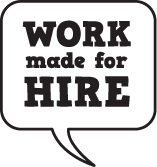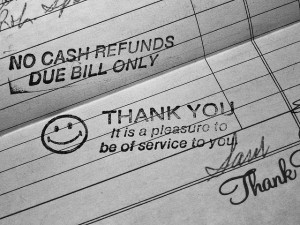What to Do After They Say “No”
One of the biggest fears that novice negotiators have is hearing the word, “No.”
They think that “No” means rejection, means an end before things really begin, means failure.
But it doesn’t. Not really.
“No” is a point in a negotiation, but it’s not the end of the conversation. It’s an opportunity for you to learn more about the client and figure out if this really is the right person for you to be working with.
That can be hard to remember in the moment, though, so here are some questions that often result in a “no” and what you can do and say to keep the conversation moving forward.
“Can you give me an idea of what your budget is?”
This can be a maddening conversation to maneuver. They think you’re trying to peg them in a corner and take as much money as you can; you think they’re trying to trick you into underbidding yourself.
If you want them to answer your question, and you do, you need to show them how it’s in their best interest to tell you how much they’d like to spend.
First, explain how understanding their budget will allow you to present ideas that fit both their aesthetic or practical interests and their financial interests.
Mike Monteiro has a nice post that you might consider pointing to to underscore your point: you don’t want to show them a car they fall in love with and can’t afford, you want to show them the best damn car on the lot that fits their budget. (Or, if you rather, the sage advice of “Say Yes! to the Dress”: never try on a dress you can’t afford.)
If that doesn’t work, see if you can’t get them to identify where their range is. “Is the budget more in the hundreds of dollars range or the thousands of dollars range?” This usually helps because committing to an inexact range is less intimidating than saying “I have exactly $1,256.95 to spend; please don’t take it all.”
But if they still aren’t budging, take Merlin Mann’s advice and sticker shock them: tell them your highest hoped for price plus 20%. This will get you a reaction, and while it might not be the sweetest and nicest reaction, it will give you something to work with.
You can either follow Mann’s advice and ask them what they were hoping to pay for the work (which they’ll likely suddenly be able to articulate) or you can prod them along. “Ok, knowing that price is out of your range helps. Would you say your range is more than or less than [your highest hoped for price minus 5%]?”
Don’t jump down in price too quickly with your follow up questions; remember your goal is to get them to give you information, not for you to negotiate against yourself.
“Do you have an example of the type of work you’re looking for?”
“No, not really, I was just hoping for you know, a thing? That fits my business? I’m sure you’ll be able to come up with something great; you’re creative.”
If you allow a client to get away with an answer like this you are giving them permission to reject your work for no reason.
But that doesn’t mean you have to throw up your hands and walk off the job. Instead, help them understand how having clear expectations and roles in the job will help produce a better product and cost less in the long run.
“Thank you, I appreciate your confidence in my work. I know that I could come up with dozens of different ideas for this project. But if we did it that way it will likely cost you a lot of money and both of us a lot of time. And I’m still not certain you’d get what you need. It’s important that I have an idea of your expectations so I can create something useful for you.”
If you’re creating something they need to use, start them off with the practical questions: how will they need to use it? In print? online? do they want video and audio or just one or the other?
Once you have a good understanding of practicalities, collect a few examples and play optometrist. “Are you looking for something more like A or B? Ok, how about A or C?”
This can take time, but in my opinion it’s better than you creating five options and having them reject each of them because they’re not “quite right.”
Another option is creating one example and having them articulate exactly what’s right and wrong with it. You’ll likely have to shepherd them through this process, but again, it’s better than wasting your time throwing options at them and hoping one sticks.
“Did you get my invoice?”
The first time this happens and you hear “no” I recommend you give them the benefit of the doubt; sometimes things get missed. But don’t just resend the invoice and hope for the best.
Send it via email while you’re on the phone with them and wait until you get confirmation that it showed up in their inbox.
or
Send the invoice via email and ask that they send you an email confirming they received it.
or
Send the invoice via mail with a signature required for receipt.
Diversify your response to increase your likelihood of success. The folks from Zen Cash make collecting money their business, so if they find that diversity leads to better response rates, they probably know what they’re talking about.
And remember I said the first time it happens give them the benefit of the doubt? Not the second, third and fourth times.
If they keep “forgetting” to pay you or “losing” the invoice, talk to them about it. A simple, “Hey, what’s going on?” can start the conversation and help avoid misunderstandings, hard feelings and an unnecessarily light bank account.
Don’t give up because you hear “no.” It doesn’t have to be the end of the conversation. Use “no” as an opportunity to educate your clients about how more information will help them get the best result possible and ensure a longer and more productive working relationship.
Categories: Dealing with People






